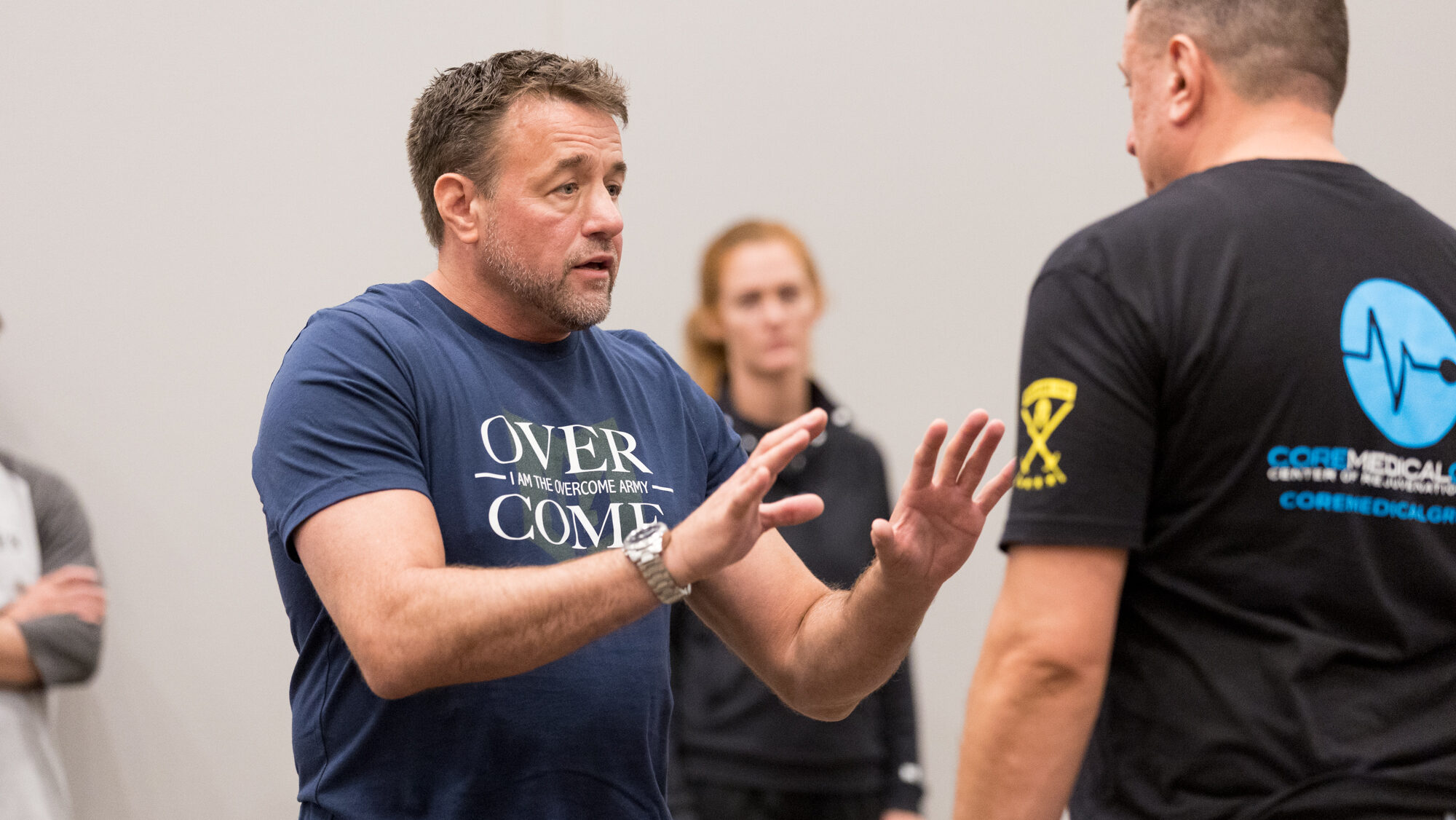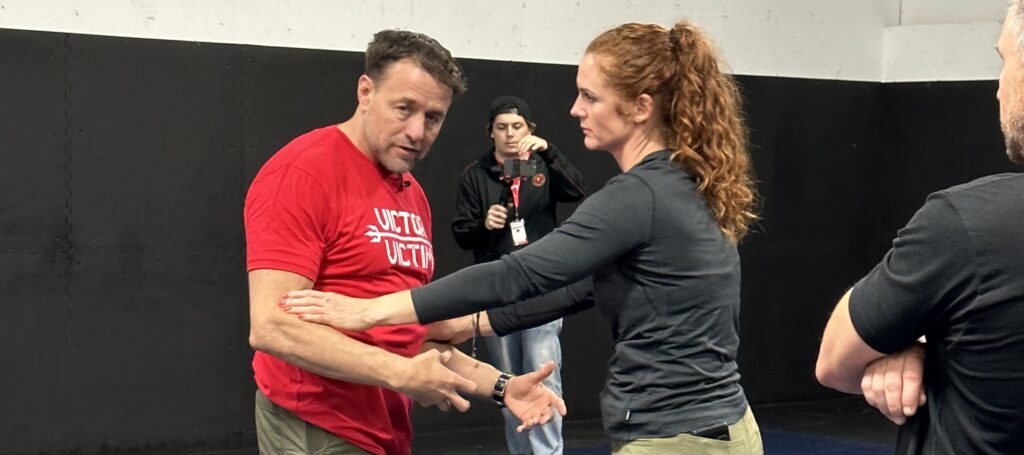In the realm of self-defense, our physical actions often gain the limelight. We admire the dexterity of martial artists or the prowess of boxers but often overlook the most fundamental form of defense: communication. This ability, vital in stressful situations, is the art of verbal Jiu-Jitsu, a dance of words that can deter threats. Within the C-Tac® program, we emphasize the concept of being interviewed by potential threats.

The Interview: A Prelude to Attack
Predators, much like corporate interviewers, gauge their “prey” through an initial interaction. This interview is their method of assessing vulnerabilities, determining if you can be an “easy meal.” Think about it: a predator is less likely to pounce on prey that seems too challenging. Yet, the difference here is that faltering during this ‘interview’ could lead to devastating consequences.
“Speak softly and carry a big stick; you will go far.”
– Theodore Roosevelt
Many people underestimate the value of verbal prowess. If we don’t regularly flex our conversational muscles, especially in high-pressure situations, they become weak. In the C-Tac® program, we emphasize cultivating this ‘gift of gab.’
However, it’s essential to be grounded in reality. Words, despite their power, might not always be enough. This reality is particularly true with determined predators. They might see through the façade, discerning a lack of confidence behind those words. This isn’t a mark against verbal de-escalation but a reminder that it doesn’t always guarantee safety.
Physical Positioning: The Unsung Aspect of Conversation
Many overlook where you stand, how your hands move, the direction of your gaze—these elements of a conversation. However, in the C-Tac® approach, we emphasize the significance of positioning during these verbal exchanges. While you might be striving to defuse the situation with words, it’s critical to maintain an advantageous physical position. This positioning ensures that you’re not caught off guard if the situation escalates.
Physical Defense
The truth of the matter is that while words are powerful, they cannot always serve as shields. In moments when words fall short, physical self-defense becomes vital. This isn’t about appearing formidable but about having an actionable plan for protection.
Real confidence, the type that radiates, doesn’t just sprout from eloquent speech. It emerges from the assurance of being mentally, verbally, and physically equipped to handle threats. It’s an understanding that if words fail, you possess the means to protect yourself and those you care about.
“There is a time to be a nice person and there’s a time to say enough is enough.”
– Steven Aitchison
Integrating Self-Protection, Verbal Skills, and Self Defense
Effective self-defense isn’t singular; it’s a triad. First is the study of self-protection—pre-violence training. It’s what you would expect from a professional bodyguard. Though most civilians will never enter the security profession, understanding these principles is vital. After all, each day, we are our own bodyguards tasked with ensuring our safety and that of our families.

Next, refining your gift of gab is essential. Just as law enforcement regularly practices this skill, civilians should hone verbal techniques tailored to common situations they might encounter.
Lastly, there’s the practical aspect of self-defense. This ensures that if a situation escalates, you’re not left defenseless.
Moreover, as our society evolves, understanding the force continuum becomes imperative. Even civilians need to grasp the stages of conflict escalation and appropriate responses. This knowledge not only aids in de-escalation but also provides clarity when recounting events to law enforcement.
In Conclusion
Self-defense is a multifaceted discipline. It’s an interplay of verbal Jiu-Jitsu, physical positioning, and combat techniques. In the changing landscapes of our times, mastering this triad is no longer just an option—it’s a necessity. The C-Tac® program recognizes this truth and offers a holistic approach to self-defense, ensuring that you’re never caught unprepared when faced with threats.

The C-Tac® system was innovatively conceptualized and brought to fruition by Alan Baker, with the primary goal of empowering individuals to be adequately prepared for not just self-defense situations, but a myriad of potential circumstances life may bring. The conception of the C-Tac® system stemmed from Alan’s observation of the scarcity of practical, comprehensive, and meaningful training systems addressing this need. He sought to cut through the swathes of well-marketed but ultimately ineffective programs that are readily available.
For those interested in extending their journey with the C-Tac® system and exploring the opportunity to become a C-Tac® Instructor, we encourage you to visit our association website here: https://civtaccoach.com/
Should you have any questions about the program, or if you simply wish to engage in further dialogue about C-Tac® and its principles, please feel free to reach out to Coach Baker or any member of our committed team at any time. We are here to guide and support you on your personal safety, awareness, and empowerment journey.

